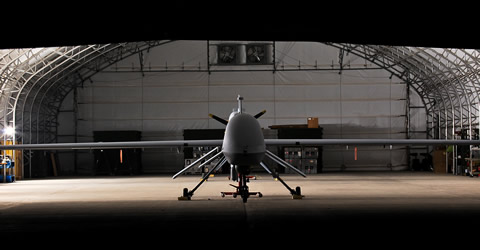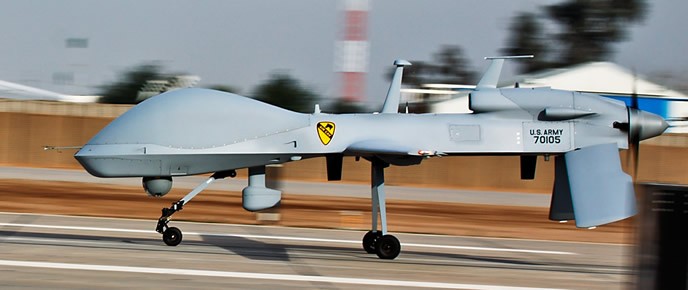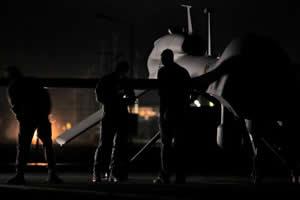
The U.S. Army has begun operating the Sky Warrior MQ-1C drone in Iraq. The aircraft are operating as part of a Quick Reaction Capability (QRC) unit established by the training battalion at Ft. Huachuca, Az. Operating as a divisional asset, under the 1st Air Cavalry Brigade, (1st Cavalry Division, U.S. Division – Center), the QRC assists in developing and testing the concept of operation (CONOPS) of future divisional UAVs for the U.S. Army. The aircraft deployed to Camp Taji, Baghdad are the Phase 0 developmental aircraft, used for the test and evaluation of the MQ-1C. The Army is expecting to field production aircraft to the first divisions next year (2011). Sky Warrior, developed and produced by General Atomics, is a scaled-up version of the U.S. Air Force MQ-1A Predator.

According to Capt. Travis Blaschke, from Spokane, Wash., commander of QRC1, the mission of QRC1 is to support the parent unit, U.S. Division – Center on all of their reconnaissance surveillance and target acquisition missions by providing aero-scout capabilities to the maneuver commander. As part of the Sky Warrior Test and Evaluation effort the unit continues to validate the MQ-1C for the program of record. “To date, the majority of the missions we are conducting involve the dissemination of full-motion video, which provides situational awareness for the commanders at battalion, brigade and even division,” said Blaschke. “We have been over-watching air assaults, cordon and searches; conducting reconnaissance and surveillance.”

Along with the ability to conduct surveillance and fly well beyond a dozen hours, once testing is complete, the Sky Warrior will be armed with Hellfire missiles, which will add another dimension to its combat role. “This is an aircraft that can have different payloads,” said Blaschke. “It has the capability of actually looking out long distances in order to find the enemy in different ways. Whether it is using the image intelligence, using signal intelligence, using measuring intelligence, this platform can not only find the enemy but will ultimately be able to engage and neutralize the enemy.”
The Sky Warrior also has the capability to point out targets for other aircraft – enabling them to hit their target while the Sky Warrior aims, said Blaschke. It can guide in a Hellfire from an AH-64D Apache attack helicopter or even Joint Direct Attack Munitions from an F/A-18 Super Hornet, F-16 Fighting Falcon or F-22 Raptor – making a hunter-killer team.

















